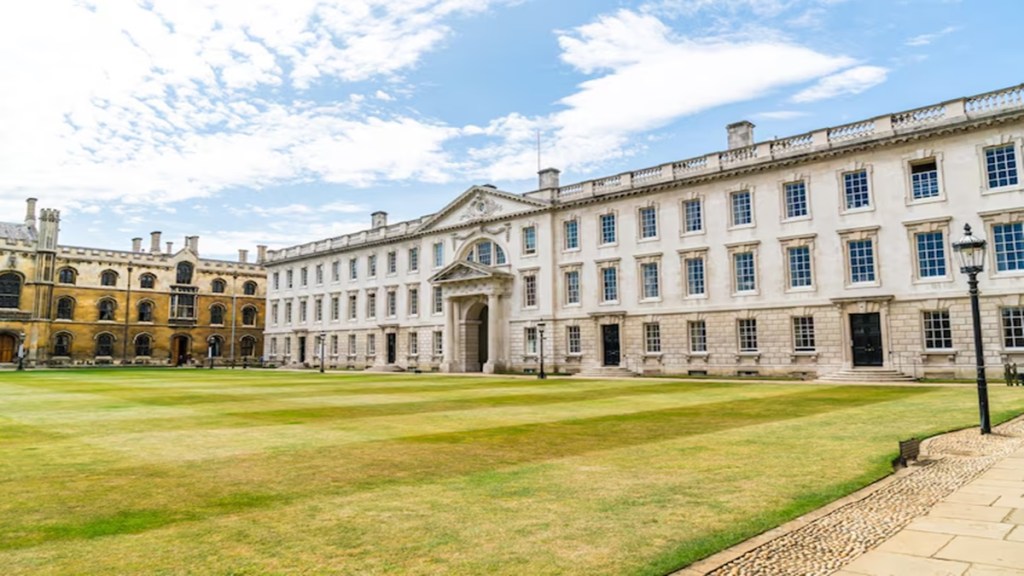“The University will not surrender its independence or relinquish its constitutional rights….The administration’s prescription goes beyond the power of the federal government. ….And it threatens our values as a private institution devoted to the pursuit, production, and dissemination of knowledge. No government — regardless of which party is in power — should dictate what private universities can teach, whom they can admit and hire, and which areas of study and inquiry they can pursue.”
Which Vice Chancellor of an Indian University said that in response to perceived interference in the administration of the University? The answer is “none”.
Those were the words of Mr Alan Garber, President of Harvard University (older than the United States of America). He defied the President of the United States who believes he is the most powerful person on earth. Mr Trump retaliated by freezing USD 2.2 billion in grants and USD 60 million in contracts to Harvard University, but the University refused to yield. Last month, Columbia University was denied USD 400 million of federal funds and it buckled under.
No Autonomy
According to the University Grants Commission (UGC) website, there are 1074 universities in India as on January 25, 2023, and the break-up is:
State Universities 460
Deemed to be Universities 128
Central Universities 56
Private Universities 430
Total 1074
This number includes the oldest three universities established in 1857 — in Calcutta, Madras and Bombay — long before Independence. By the way, because of differences with UGC and the Governor-Chancellor, the University of Madras has been without a Vice Chancellor since August 2023.
Indian universities enjoy no autonomy thanks to laws made by Parliament and the manner in which the UGC has worked the University Grants Commission Act, 1956. The Act was enacted to “make provision for the co-ordination and determination of standards in Universities”. Section 12 authorized UGC to allocate and disburse “grants” to universities for the determination and maintenance of standards of teaching, examination and research in universities. In 1984, Section 12A was inserted and Section 14 was amended which vastly expanded the powers of UGC. The power of the purse has enabled the UGC to intrude into every function of universities. Using these powers, ‘regulations’ have been made by UGC that have practically obliterated the autonomy of a university.
UGC is ‘big chief’
The control of the UGC (and through the UGC of an ideologically-biased central government) extends to appointments of teachers, design of curriculum, areas of research, design and conduct of examinations, etc. Look at some of UGC’s intrusive regulations:
Regulations on qualifications and appointment of all teachers and other academic staff;
- the National Eligibility Test (NET);
- the National Eligibility and Entrance Examination (NEET);
- the Joint Entrance Examination (JEE);
- the Common University Entrance Test (CUET);
- the Learning Outcomes-based Curriculum Framework (LOCF);
- the Choice Based Credit System (CBCS); and
- the National Institutional Ranking Framework (NIRF).
Since Vice Chancellors exercised the few ‘residual’ powers, UGC decided to control the selection and appointment of Vice Chancellors (see Vice Chancellors will become Viceroys, The Indian Express, January 12, 2025). In my view, UGC has no role to play in the selection and appointment of teaching and non-teaching posts in State and private universities, especially the appointment of the Vice Chancellor. If allowed, it will be the penultimate step to the nationalization of universities.
Casualty is higher education
Has the pervasive control of universities helped the cause of higher education? No Indian university ranks in the top 100 universities of the world (prepared by QS). The highest ranked Indian university is IIT, Bombay that took the 118th rank. In a reply in Parliament, the government disclosed that, as on October 21, 2024, the number of vacant teaching posts in central universities alone was 5,182. The Parliamentary Standing Committee on Education found that there was a decline in placements of IIT graduates. Between 2021-22 and 2023-24 there was a fall of over 10 per cent in placements. Placement of NIT graduates also declined by 10.77 per cent. Dr C.V. Raman was the lone product of an Indian university to have won the Nobel Prize for Science (1930).
Indian universities are affected by several maladies: no endowment funds, little alumni support, inadequate grants and research contracts, lack of academic freedom, over-regulation especially by the UGC, interference by the Chancellor (Governor) and the Pro-chancellor (usually the Minister of Education), and meddling by politicians and bureaucrats. The lack of academic freedom can be illustrated by one example: hitherto universities that run Distance Education programmes could enroll students from anywhere including foreign students. A recent UGC regulation limits the ‘catchment area’ to one or two districts of the State where the university is located. The university has no incentive to excel and the student has no choice of universities to pursue distance education.
More bad news is that the space for academic freedom is shrinking. Intolerant groups have launched verbal and physical assaults on several universities, (and their teachers and students) including JNU, DU, Jamia Millia, AMU, Jadavpur, Central University, Jammu, and many others.
Unless the UGC Act is repealed, re-imagined and re-enacted, University autonomy will be a distant goal. Unless endowments are created with alumni support, academic freedom will be illusory. Instead of self-reliant public universities, there will be a proliferation of private universities promoted and funded by wealthy families and corporates (with exceptions). The intention may be philanthropy but the result will be commerce.


